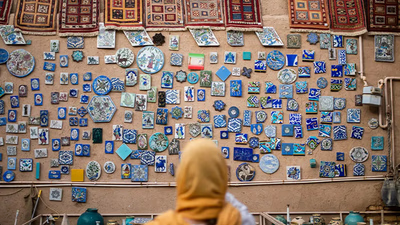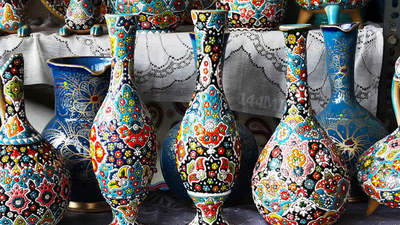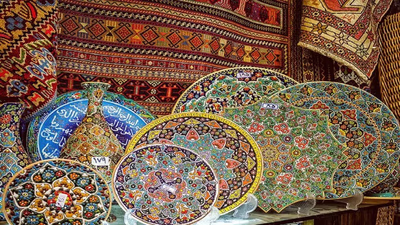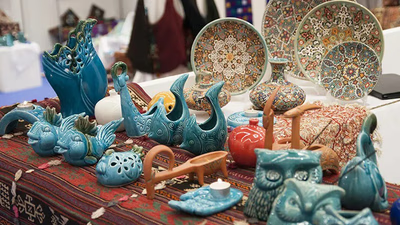
Traditional Asian handicrafts and art forms enrich trade platforms.
Traditional industries and handicrafts still play an important role in the economy of all Asian countries. Not only do they constitute major production and trade activities by themselves, but they are often the only available means of providing employment and raising the standard of living for the rural and urban population. Due to the ever-increasing growth of the global markets for the products of Asian traditional industries and Asian handicrafts, there is a significant place. During the 1990s, significant improvements were made in the marketing of these products in rich countries.
A highly regarded art form in China, calligraphy involves the skilled and expressive writing of Chinese characters using a brush and ink. It is considered both a form of writing and a visual art. The art of folding paper to create intricate and delicate objects, such as animals, flowers, and geometric shapes. Origami is deeply rooted in Japanese culture and has gained international popularity. India is renowned for its vibrant and intricate textiles. Traditional techniques include block printing, tie-dye (bandhani), embroidery (such as kantha and zardozi), and weaving (such as Banarasi silk and Kanchipuram sarees).
Celadon pottery, with its distinct green glaze, is a traditional Korean ceramic art form. It is known for its elegant shapes, intricate carvings, and use of inlaid designs. Thailand is famous for its silk production and weaving techniques. Thai silk is known for its rich colors, intricate patterns, and luxurious texture. Batik is a traditional Indonesian fabric dyeing technique using wax-resistant designs. It involves applying wax to fabric, dyeing it, and then removing the wax to reveal intricate patterns and motifs. Thangkas are intricate Buddhist religious paintings on fabric or paper. They often depict deities, mandalas, and religious narratives and are highly regarded in Tibetan Buddhism.
Vietnamese lacquerware involves applying multiple layers of lacquer to create glossy and durable objects like bowls, boxes, and vases. These items are often adorned with intricate hand-painted designs. Persian miniature painting is a highly detailed and intricate art form that originated in ancient Persia (present-day Iran). It involves small-scale paintings depicting mythological, historical, and literary scenes. Ikebana, or the art of flower arrangement, is deeply rooted in Japanese culture. It emphasizes harmony, balance, and the use of minimalism to create beautiful and serene floral compositions.
Central Asia is rich in traditional handicrafts. Ancient techniques can be seen both in small private workshops and in larger modern factories. Handicraft centers are located in different areas of the region and as a special experience they can be well added to any type of tour. At the same time, a special craft enthusiast tour is sure to pass the main historical and architectural sites, so travelers can see the \"musts\" as well. Local workshops and artisans offer many options for master classes that can be added to any trip.
Handicrafts in East Asia, especially in India and China, like other corners of the mysterious history of this land, are a mixture of ambiguity and mystery. Extensive research by historians and researchers regarding the origin and origin of these arts in East Asia has not yielded much documented results and most of them have limited themselves to mentioning their possibilities and guesses. Many Asian historians and artists believe that this art first appeared in the Indian state of Andhra Pradesh and spread to other parts of Asia, including China.
-

West Asia is a significant hub for handicrafts, blending art and culture across 14 countries. This industry not only preserves cultural heritage but also generates income, with June 10th recognized as World Handicrafts Day. The region boasts renowned products such as Persian carpets, Turkish ceramics, Palestinian embroidery, and Yemeni jewelry, showcasing intricate craftsmanship and vibrant designs. However, despite its rich artistic legacy, the handicraft sector faces challenges, including economic instability and competition in international markets. Many artisans struggle to maintain their livelihoods due to ongoing conflicts in countries like Syria and Yemen. The potential for West Asia to become a major exporter of handicrafts is hindered by a lack of supportive policies and infrastructure. With over 295 registered handicraft fields and a community of 2 million involved in this sector, there is a pressing need for governments to implement protective measures and promote this valuable cultural industry. Addressing these issues could revitalize the handicraft market, enhance employment opportunities, and preserve the region"s artistic identity."
-

Handicrafts and traditional crafts represent skilled craftsmanship that creates decorative and functional items using traditional methods. These crafts are deeply rooted in the culture and heritage of specific regions, often reflecting local traditions and aesthetics. They are typically handmade, employing simple tools and materials, and are characterized by their cultural significance and economic potential. Handicrafts can include pottery, textiles, woodwork, metalwork, and more, each showcasing the unique artistry of the artisans. The production of handicrafts requires minimal investment and can foster development in disadvantaged areas, contributing to local economies. The crafts often carry high added value compared to other industries and rely on domestic raw materials. As societies evolve, the importance of preserving these traditional crafts remains, as they not only provide income for artisans but also enhance cultural tourism. The Arts and Crafts movement, which began in the 19th century, continues to inspire a renewed appreciation for handmade goods and the cultural narratives they embody.
-

Islamic art encompasses a diverse range of artistic expressions rooted in Islamic beliefs and principles across West Asia. This art form emerged following the advent of Islam, characterized by its prohibition of sculpting and portraiture. Instead, it emphasizes calligraphy, particularly Arabic calligraphy, which adorns various surfaces including mosques and manuscripts. Geometric patterns, known as arabesques, are prevalent in Islamic architecture, manifesting in intricate tilework and woodcarving. Notable styles include Persian miniature painting, Ottoman illumination, and Moroccan Zellige tilework. Techniques such as Ebru, which creates marbled designs on water, and traditional wood carving from Iraq further illustrate the richness of Islamic art. The historical context of Islamic art has attracted scholarly attention since the 19th century, leading to a deeper understanding of its significance and evolution. Regions like Iran and Palestine contribute unique crafts, including metalwork and Hebron tiles, showcasing the cultural diversity within Islamic art.
Sadu weaving from Saudi Arabia highlights the intricate craftsmanship of Bedouin communities, emphasizing the importance of textiles and patterns in this artistic heritage. Overall, Islamic art reflects a blend of spirituality, cultural identity, and artistic innovation, making it a vital aspect of the region"s heritage and trade."
-

Traditional industries and handicrafts are vital to the economies of Asian countries, providing employment and enhancing living standards. The global market for these products has expanded significantly, especially since the 1990s, leading to improved marketing strategies in wealthier nations. Notable art forms include Chinese calligraphy, Japanese origami, and Indian textiles, each showcasing unique cultural heritage. Countries like Korea and Thailand are recognized for their distinct pottery and silk weaving techniques, respectively. Indonesia"s batik and Tibetan thangkas further illustrate the diversity of Asian crafts. Vietnamese lacquerware and Persian miniature painting highlight the intricate artistry found throughout the region. Central Asia boasts a rich tradition of handicrafts, with local workshops offering immersive experiences for tourists. Despite extensive research, the origins of these art forms remain somewhat ambiguous, with many historians suggesting that they first emerged in India before spreading across Asia. The blend of tradition and modernity in these crafts continues to attract global interest, making them an essential component of the region"s trade landscape.




